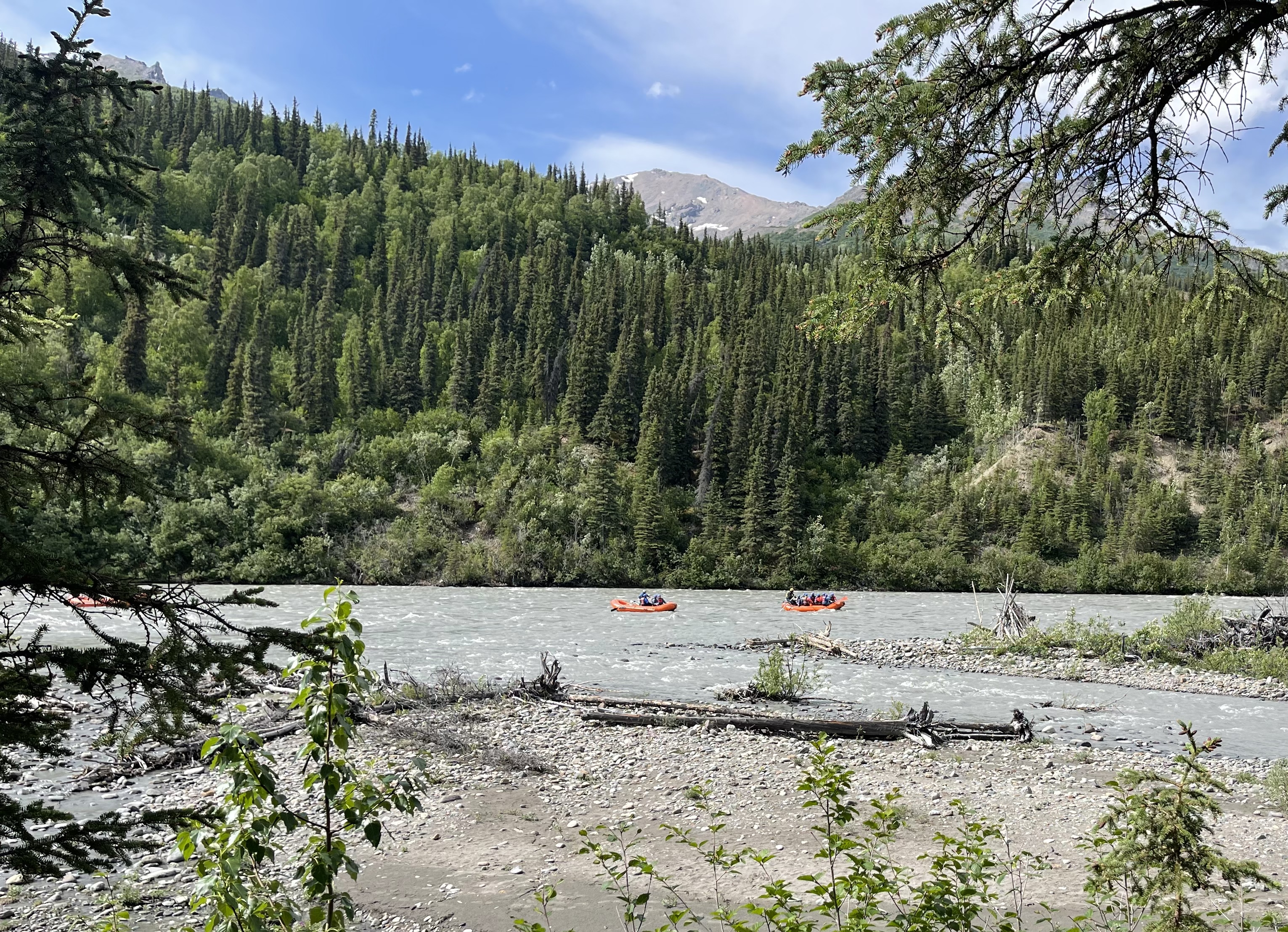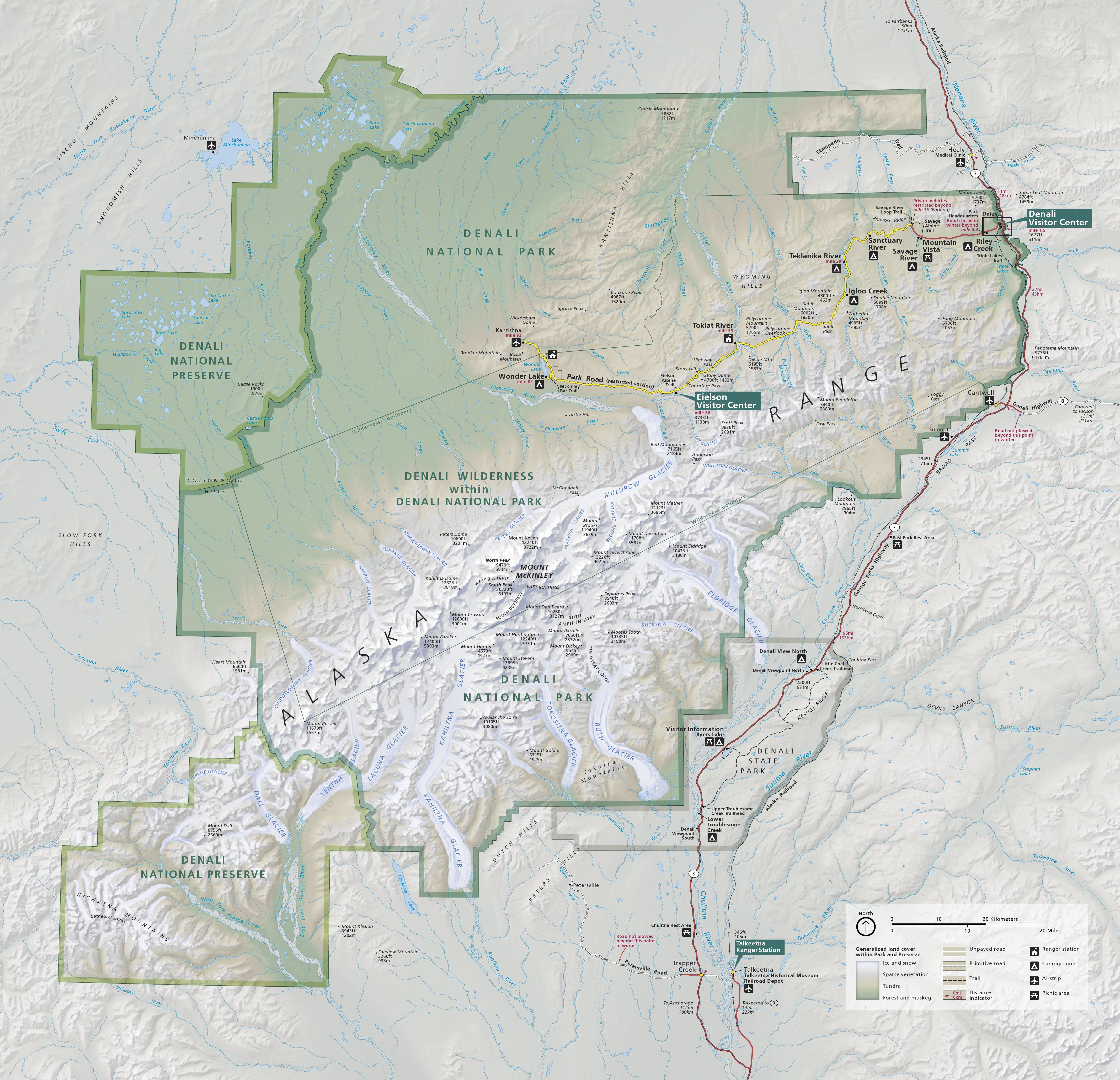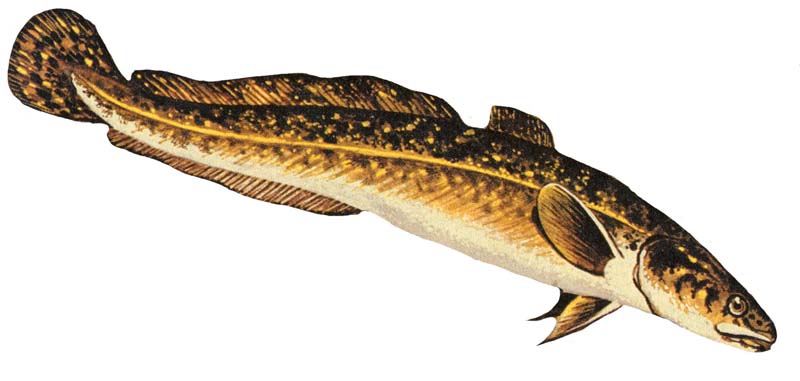|
Nenana River
The Nenana River ( taa, Nina No’) is a tributary of the Tanana River, approximately long, in central Alaska in the United States. It drains an area on the north slope of the Alaska Range on the south edge of the Tanana Valley southwest of Fairbanks. It issues from the Nenana Glacier in the northern Alaska Range, southwest of Mount Deborah, approximately 100 mi (160 km) south of Fairbanks. It flows briefly southwest, then west, then north, forming the eastern boundary of Denali National Park and Preserve. It emerges from the mountains onto the broad marshy Tanana Valley, joining the Tanana River from the south at Nenana, Alaska, approximately southwest of Fairbanks. The Tanana River continues to its confluence with the Yukon River. The upper valley of the river furnishes approximately 100 mi (160 km) of the northern route of both the Alaska Railroad and the Parks Highway (Alaska State Highway 3) connecting Fairbanks and Anchorage. The Nenana supports popul ... [...More Info...] [...Related Items...] OR: [Wikipedia] [Google] [Baidu] |
Denali National Park And Preserve
Denali National Park and Preserve, formerly known as Mount McKinley National Park, is an American national park and preserve located in Interior Alaska, centered on Denali, the highest mountain in North America. The park and contiguous preserve encompass which is larger than the state of New Hampshire. On December 2, 1980, Denali Wilderness was established within the park. Denali's landscape is a mix of forest at the lowest elevations, including deciduous taiga, with tundra at middle elevations, and glaciers, snow, and bare rock at the highest elevations. The longest glacier is the Kahiltna Glacier. Wintertime activities include dog sledding, cross-country skiing, and snowmobiling. The park received 594,660 recreational visitors in 2018. History Prehistory and protohistory Human habitation in the Denali Region extends to more than 11,000 years before the present, with documented sites just outside park boundaries dated to more than 8,000 years before the present. However, rel ... [...More Info...] [...Related Items...] OR: [Wikipedia] [Google] [Baidu] |
Yukon River
The Yukon River (Gwichʼin language, Gwich'in: ''Ųųg Han'' or ''Yuk Han'', Central Alaskan Yup'ik language, Yup'ik: ''Kuigpak'', Inupiaq language, Inupiaq: ''Kuukpak'', Deg Xinag language, Deg Xinag: ''Yeqin'', Hän language, Hän: ''Tth'echù'' or ''Chuu k'onn'', Southern Tutchone: Chu Nìikwän, russian: Юкон, Yukon) is a major watercourse of northwestern North America. From its source in British Columbia, Canada, it flows through Canada's territory of Yukon (itself named after the river). The lower half of the river continues westwards through the U.S. state of Alaska. The river is long and empties into the Bering Sea at the Yukon–Kuskokwim Delta. The average flow is . The total drainage area is , of which lies in Canada. The total area is more than 25% larger than Texas or Alberta. The longest river in Alaska and Yukon, it was one of the principal means of transportation during the 1896–1903 Klondike Gold Rush. A portion of the river in Yukon—"The Thirty Mile" se ... [...More Info...] [...Related Items...] OR: [Wikipedia] [Google] [Baidu] |
Round Whitefish
The round whitefish (''Prosopium cylindraceum'') is a freshwater species of fish that is found in lakes from Alaska to New England, including the Great Lakes. It has an olive-brown back with light silvery sides and underside and its length is generally between . They are bottom feeders, feeding mostly on invertebrates, such as crustaceans, insect larvae, and fish eggs. Some other fish species, like white sucker in turn eat their eggs. Lake trout, northern pike and burbot are natural predators. Other common names of the round whitefish are Menominee, pilot fish, frost fish, round-fish, and Menominee whitefish. The common name "round whitefish" is also sometimes used to describe ''Coregonus huntsmani'', a salmonid more commonly known as the Atlantic whitefish. While it was once common, numbers have been decreasing in the last century due to a number of possible causes. The round whitefish is now protected in some states, such as New York, under the Endangered Species Act from h ... [...More Info...] [...Related Items...] OR: [Wikipedia] [Google] [Baidu] |
Northern Pike
The northern pike (''Esox lucius'') is a species of carnivorous fish of the genus '' Esox'' (the pikes). They are typical of brackish and fresh waters of the Northern Hemisphere (''i.e.'' holarctic in distribution). They are known simply as a pike in Britain, Ireland, and most of Eastern Europe, Canada and the United States. Pike can grow to a relatively large size: the average length is about , with maximum recorded lengths of up to and published weights of . The IGFA currently recognizes a pike caught by Lothar Louis on Greffern Lake, Germany, on 16 October 1986, as the all-tackle world-record northern pike. Northern pike grow to larger sizes in Eurasia than in North America, and typically grow to larger sizes in coastal than inland regions of Eurasia. Etymology The northern pike gets its common name from its resemblance to the pole-weapon known as the pike (from the Middle English for 'pointed'). Various other unofficial trivial names are common pike, Lakes pike, great n ... [...More Info...] [...Related Items...] OR: [Wikipedia] [Google] [Baidu] |
Longnose Sucker
The longnose sucker (''Catostomus catostomus'') is a species of cypriniform freshwater fish in the family Catostomidae. It is native to North America from the northern United States to the top of the continent. It is also found in Russia in rivers of eastern Siberia, and thus one of only two species of sucker native to Asia (the other is the Chinese ''Myxocyprinus asiaticus''). Description The body of the longnose sucker is long and round with dark olive or grey sides and top and a light underside. They are up to in total length and weigh up to . Longnose suckers are easily confused with white suckers (''Catostomus commersoni''), which appear very similar. However, longnose suckers can be distinguished by their comparatively finer scales. Distribution and ecology The longnose sucker inhabits cold, clear waters, including lakes, pools, rivers and streams, and occasionally also brackish waters. In North America, it ranges north from the Columbia, Delaware, Missouri and Mon ... [...More Info...] [...Related Items...] OR: [Wikipedia] [Google] [Baidu] |
Coregonus Sardinella
''Coregonus sardinella'', known as the least cisco or the sardine cisco, is a fresh- and brackishwater salmonid fish that inhabits rivers, estuaries and coastal waters of the marginal seas of the Arctic Basin, as well as some large lakes of those areas. In North America it is found from the Murchison River (Nunavut) west through the Bering Strait to the Bristol Bay (Bering Sea) in Alaska, and in the Russian Arctic from the northern part of the Bering Sea across the Siberian Arctic coast to the Kara Sea and Kara River and further to the Pechora River drainage on the European side. Sendek DS (2021Phylogenetic relationships in vendace and least cisco, and their distribution areas in western Eurasia.''Annales Zoologici Fennici'' 58: 289–306. It has been introduced in some lakes and rivers in Uzbekistan and Kazakhstan. ''Coregonus sardinella'' is closely related to the European cisco or vendace ''Coregonus albula'', and also is close to the Siberian peled whitefish ''C. peled' ... [...More Info...] [...Related Items...] OR: [Wikipedia] [Google] [Baidu] |
Humpback Whitefish
The humpback whitefish (''Coregonus pidschian''), also referred to as the bottom whitefish, the Arctic whitefishKottelat, M. and Freyhof, J. 2007. Handbook of European Freshwater Fishes. Publications Kottelat, Cornol, Switzerland. or the pidschian, is a species of freshwater whitefish with a northern distribution. It is one of the members in the broader common whitefish, common whitefish complex, or the ''Coregonus clupeaformis'' complex. This fish lives in estuaries and brackish water near river mouths, in deltas and in slowly running rivers, in large lakes with Tributary, tributaries, and floodplain lakes. It can migrate long distances upriver for spawning. The distribution of ''Coregonus pidschian'' is in the Arctic basin, ranging from Northern Norway and Finland across the Russian coast to Alaska and up to the Mackenzie River drainage in North-West Canada. It is also found in the Okhotsk Sea basin. [...More Info...] [...Related Items...] OR: [Wikipedia] [Google] [Baidu] |
Burbot
The burbot (''Lota lota'') is the only gadiform (cod-like) freshwater fish Freshwater fish are those that spend some or all of their lives in fresh water, such as rivers and lakes, with a salinity of less than 1.05%. These environments differ from marine conditions in many ways, especially the difference in levels of .... It is also known as bubbot, mariah, loche, cusk, freshwater cod, freshwater ling, freshwater cusk, the lawyer, coney-fish, lingcod, and eelpout. The species is closely related to the marine common ling and the cusk (fish), cusk. It is the monotypic, only member of the genus ''Lota''. For some time of the year, the burbot lives under ice, and it requires frigid temperatures to breed. Etymology The name burbot comes from the Latin word ''barba'', meaning beard, referring to its single chin whisker, or barbel (anatomy), barbel. Its generic and specific names, ''Lota lota'', comes from the old French ''lotte'' fish, which is also named "barbot" in Old French. ... [...More Info...] [...Related Items...] OR: [Wikipedia] [Google] [Baidu] |
Broad Whitefish
The broad whitefish (''Coregonus nasus'') is a freshwater whitefish species. Dark silvery in colour, and like a herring in its shape, its distinctive features include a convex head, short gill rakers, and a mild overbite. It is found in the Arctic-draining streams, lakes, and rivers of far eastern Russia and North America. Its prey includes larval insects, snails, and shellfish. It is eaten by humans and brown bears. Description The broad whitefish is a herring-shaped fish with a more compressed body and convex head than other whitefishes. It is iridescent, with a dark olive-brown back, silvery grey sides, and a whitish bottom.Froese and Pauly, 2010 Features that distinguish it from other species include a mild overbite and 18–25 short gill rakers. The fins of adults are grey, while those of young fish are grey.Alaska Natural Heritage Program, 2005 It reaches a maximum length of , and a maximum weight of . Distribution and habitat The broad whitefish is found in Arctic-d ... [...More Info...] [...Related Items...] OR: [Wikipedia] [Google] [Baidu] |
Arctic Lamprey
The Arctic lamprey (''Lethenteron camtschaticum''), also known as the Japanese river lamprey or Japanese lampern (''Petromyzon japonicus'' Martens 1868, ''Lampetra fluviatilis japonica'' (Martens 1868), '' Lampetra japonica'' (Martens 1868), '' Lethenteron japonicum'' (Martens 1868) ), is a species of lamprey, a jawless fish in the order Petromyzontiformes. It inhabits coastal freshwater habitat types in the Arctic.Froese, R. and D. Pauly. (Eds.''Lethenteron camtschaticum''.FishBase. 2011. Some populations are anadromous, spending part of their lives in the ocean. It is the most common and widespread lamprey in the Arctic region.Arctic Lamprey: ''Lethenteron camtschaticum''. Arctic Ocean Diversity. Description This lamprey is usually about long, but specimens have been known ...[...More Info...] [...Related Items...] OR: [Wikipedia] [Google] [Baidu] |
Arctic Grayling
The Arctic grayling (''Thymallus arcticus'') is a species of freshwater fish in the salmon family Salmonidae. ''T. arcticus'' is widespread throughout the Arctic and Pacific drainages in Canada, Alaska, and Siberia, as well as the upper Missouri River drainage in Montana. In the U.S. state of Arizona, an introduced population is found in the Lee Valley and other lakes in the White Mountains. They were also stocked at Toppings Lake by the Teton Range and in lakes in the high Uinta Mountains in Utah, as well as alpine lakes of the Boulder Mountains (Idaho) in central Idaho. Taxonomy The scientific name of the Arctic grayling is ''Thymallus arcticus''. It was named in 1776 by German zoologist Peter Simon Pallas from specimens collected in Russia. The name of the genus ''Thymallus'' first given to grayling (''T. thymallus'') described in the 1758 edition of ''Systema Naturae'' by Swedish zoologist Carl Linnaeus originates from the faint smell of the herb thyme, which emanates ... [...More Info...] [...Related Items...] OR: [Wikipedia] [Google] [Baidu] |
Alaska Blackfish
The Alaska blackfish (''Dallia pectoralis'') is a species of freshwater fish in the esocid family (Esocidae) of order Esociformes. It inhabits Arctic regions of Alaska as well as Siberia and the Bering Sea islands. Description Alaska blackfish are small, with an average length of , but have been known to reach . They have an easily distinguishable morphology (a branch of biology dealing with the study of the form and structure of organisms and their specific structural features), with relatively large, posterior dorsal fin and anal fins, large, lobed pectoral fins located just posterior to the operculum, a diphycercal caudal fin, and small, pointy pelvic fins. The head is broad and flat, with the trunk being long and slender. The color is dark green to brown on the dorsal side, pale below, with light-colored blotches appearing laterally. Males can be distinguished from females by the presence of a reddish fringe along the dorsal, caudal, and anal fins; also, the tips of the ... [...More Info...] [...Related Items...] OR: [Wikipedia] [Google] [Baidu] |





